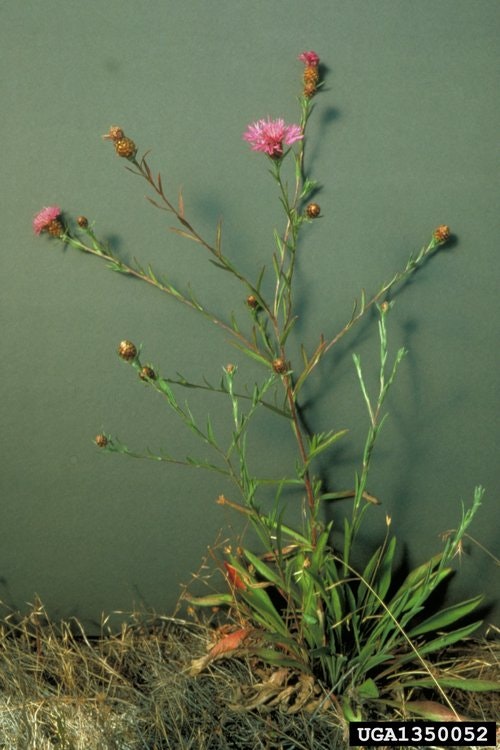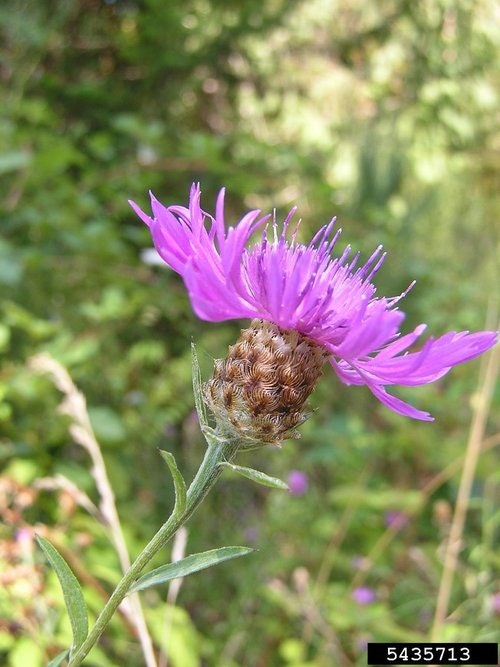MEADOW KNAPWEED
(Centaurea x moncktonii (syns: C. pratensis, C. jacea x nigra, C.nigra var. radiata, C. debeauxii))
Other common names: Hybrid knapweed
Weed Class/Rating: “B” Rated weed by ODA. “A weed of economic importance which is regionally abundant, but may have limited distribution in some counties”
Family: Asteraceae (sunflower)
Lifecycle: Short-lived Perennial
Height: 1 to 5 feet tall
Leaves: Can be lobed or unlobed and are slightly hairy, while the stem leaves are linear or slightly lobed and up to 6 inches long, growing smaller as they near the top of the plant. The lower leaves are longstalked, while the upper leaves have no stalks.
Stems: Many-branched and tipped by a solitary flower head up to one inch wide.
Roots: taproot and a woody crown
Flowers: Flower heads are pink to reddish purple, oval or almost globeshaped.
Other notes: It is a hybrid between black knapweed (C. nigra) and brown knapweed (C. jacea), and thus it can have variable characteristics. A key-identifying feature is the brown brushy-fringed bracts on the flower head.
Toxicity: Not known to be toxic
Meadow Knapweed originated in Europe and was initially introduced in the Northwest for livestock forage, though it is now considered invasive in Western Oregon. Meadow knapweed flowers from May to August, producing an abundance of nectar late in the season for honeybees. It can grow in a wide variety of habitats, out-competing native plants, grasses and other pasture species, reducing grass productivity for forage. Meadow knapweed’s tough perennial root system makes manual control methods very difficult. It is susceptible to herbicide treatments, but control efforts must persist for the long-term to decrease soil-seed stocks.
















IF SEEN:
- Cultural Control: Frequent cultivation of areas should reduce and eliminate meadow knapweed populations. A fallow program prior to pasture reseeding should eliminate populations.
- Chemical Control: Please consult the local OSU Extension Office or Oregon Department of Agriculture before beginning any chemical treatment
Learn more about Meadow Knapweed and other Noxious Weeds of Oregon by visiting the Oregon Department of Agriculture’s website here.
MEADOW KNAPWEED IN COLUMBIA COUNTY, OR - INATURALIST.ORG
The Columbia SWCD needs your help to identify Meadow knapweed sites throughout Columbia County! This is a relatively new invasive species in our area and is rapidly spreading along roadsides, trailheads, parks, and other highly managed areas. We have found several sites along Crown Zellerbach Trail. So if you enjoy hiking the trail please be on the look out for this plant.
If you think you have found Meadow knapweed, please make an observation in our project!
